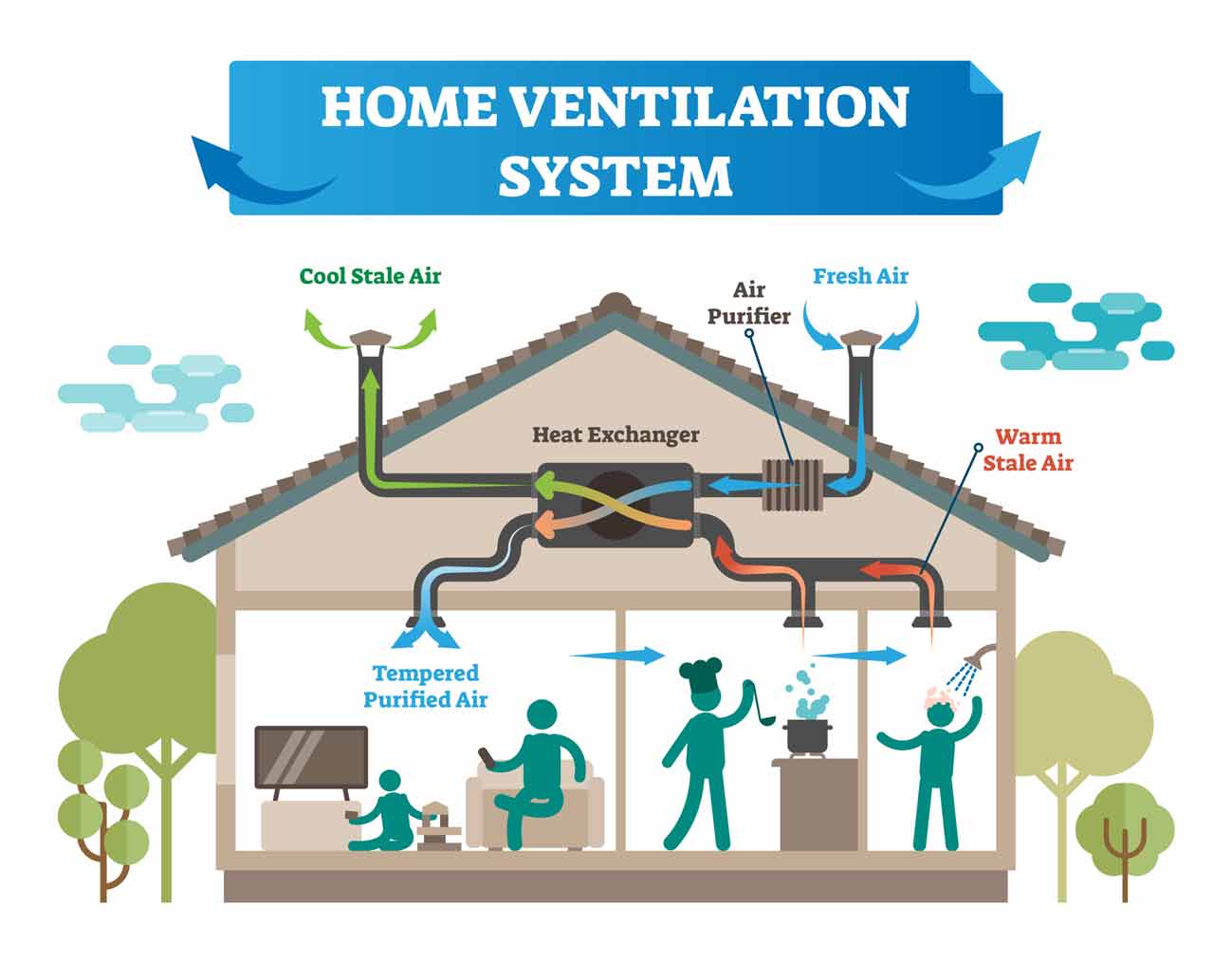Just How Heat Recovery Ventilation Improves Indoor Air Quality and Reduces Power Expenses
Heat Recovery Ventilation (HRV) systems play an important duty in boosting interior air quality while concurrently decreasing power expenses. By successfully trading stagnant interior air with fresh outside air, HRVs help keep excellent moisture and reduce toxins. Additionally, their capacity to recoup heat from outbound air reduces the stress on heating and cooling down systems. As energy expenses continue to rise, understanding the full potential of HRV systems becomes increasingly essential for home owners and businesses alike.
Comprehending Heat Recovery Ventilation Solutions

Heat recovery ventilation (HRV) systems play an essential function in improving interior air high quality, specifically in contemporary, energy-efficient buildings. These systems are designed to move warm from the outgoing stale air to the incoming fresh air, thereby decreasing energy loss while preserving excellent temperature degrees inside. HRVs include a warmth exchanger, followers, and ductwork, assisting in the continual blood circulation of air. By expelling indoor toxins and introducing fresh air, HRVs assist to stabilize humidity levels, avoid mold and mildew development, and minimize allergens. The performance of HRV systems depends on their capability to recuperate as much as 80% of the heat from the exhausted air, advertising energy preservation while making certain a healthy and balanced interior environment. Their combination is vital in attaining sustainable living techniques.
The Significance of Indoor Air Top Quality
Indoor air quality (IAQ) is an essential aspect affecting the health and wellness and health of occupants in any kind of setting. Poor IAQ can cause various health and wellness problems, consisting of respiratory issues, allergic reactions, and exhaustion. Furthermore, it can intensify status quo such as asthma. Elements adding to low IAQ consist of pollutants from indoor resources like cleaning agents, mold, and insufficient air flow. Consequently, maintaining excellent IAQ is essential for advertising a safe and comfy living or functioning room. Effective approaches to improve IAQ include routine monitoring of air high quality, appropriate ventilation systems, and minimizing using unsafe materials indoors. By prioritizing IAQ, individuals can ensure a healthier atmosphere that promotes efficiency and general quality of life.
Energy Efficiency Conveniences of HRV Systems
Numerous homeowners and building managers are increasingly identifying the power efficiency advantages of warm recuperation ventilation (HRV) systems. By transferring warm from exhausted interior air to inbound fresh air, HRV systems noticeably minimize the power required for cooling and heating. This procedure lessens reliance on typical a/c systems, resulting in reduced energy bills. Additionally, HRVs aid maintain a balanced interior climate, avoiding excessive heating or cooling down needs. The ability to recover approximately 90% of the warm from outward bound air additionally sustains sustainability initiatives by minimizing overall blog here power usage. As a result, HRV systems contribute not only to cost savings yet additionally to a lowered carbon impact, lining up with the expanding emphasis on energy-efficient building techniques.
Setup and Maintenance Considerations
The efficient execution of warmth recuperation ventilation (HRV) systems calls for careful consideration of setup and maintenance factors to ensure peak efficiency. Proper positioning of the HRV system is crucial, as it must be mounted in a location that makes best use of air movement while lessening sound disruption. Furthermore, ductwork must be properly sized and protected to protect against energy loss. Routine maintenance, consisting of filter substitute and system cleaning, is important to safeguard optimal capability and indoor air quality. Owners should develop a regular maintenance schedule to recognize and resolve potential problems before they rise. Partnership with knowledgeable experts during both installment and upkeep phases can improve the durability and performance of HRV systems, ultimately causing much better interior atmospheres and decreased energy expenses.
Real-World Applications and Success Stories
Discovering real-world applications of heat healing air flow (HRV) systems discloses their considerable effect on interior air quality and energy performance across numerous settings. In household structures, homeowners have actually reported better air high quality, resulting in less allergies and breathing problems. Schools implementing HRV systems have actually kept in mind enhanced trainee focus and lowered absenteeism because of far better ventilation. Business buildings, such as offices and retail areas, have experienced lower energy prices and raised employee productivity. A business office in a pleasant climate attained a 30% decrease in power bills after mounting an HRV system. These success stories show that HRV innovation not only adds to much healthier atmospheres yet likewise provides substantial economic benefits, making it a valuable investment for different fields.
Frequently Asked Concerns
Can HRV Solutions Minimize Allergens in Indoor Air?
The efficiency of HRV systems in lowering indoor allergens mostly pivots on their capacity to check here filter and exchange air. HRV Heat Recovery Ventilation. By continually changing stagnant air, these systems can greatly reduce irritant degrees throughout interior settings

Exactly How Does Moisture Affect HRV System Efficiency?
Moisture greatly influences HRV system efficiency; high degrees can cause condensation, lowering performance, while reduced moisture may enhance air exchange. Balancing moisture is crucial for excellent procedure and preserving interior air high quality.
Are HRV Equipments Noisy Throughout Operation?
HRV systems can generate differing noise degrees throughout operation, depending upon their design and installment. Some devices run silently, while others may generate noticeable audio, particularly at greater air movement setups or when poorly kept.
What Is the Typical Life-span of an HRV System?

Can HRV Solutions Be Made Use Of in All Environments?
HRV systems can be utilized in numerous environments, yet their performance might vary - HRV Heat Recovery Ventilation. In severe i was reading this temperature levels, adjustments or additional systems may be required to guarantee perfect performance and convenience while keeping interior air high quality